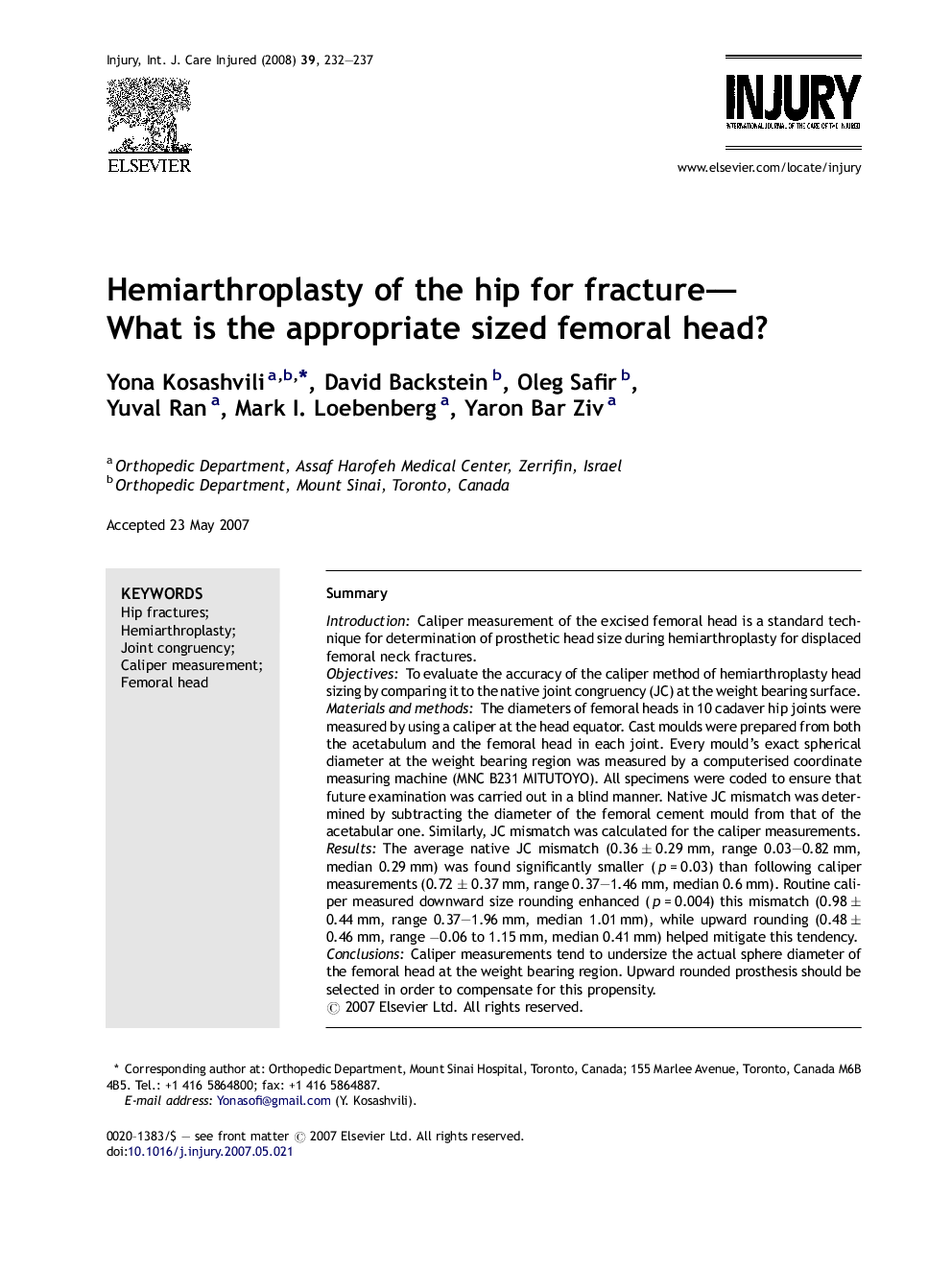| Article ID | Journal | Published Year | Pages | File Type |
|---|---|---|---|---|
| 3242195 | Injury | 2008 | 6 Pages |
SummaryIntroductionCaliper measurement of the excised femoral head is a standard technique for determination of prosthetic head size during hemiarthroplasty for displaced femoral neck fractures.ObjectivesTo evaluate the accuracy of the caliper method of hemiarthroplasty head sizing by comparing it to the native joint congruency (JC) at the weight bearing surface.Materials and methodsThe diameters of femoral heads in 10 cadaver hip joints were measured by using a caliper at the head equator. Cast moulds were prepared from both the acetabulum and the femoral head in each joint. Every mould's exact spherical diameter at the weight bearing region was measured by a computerised coordinate measuring machine (MNC B231 MITUTOYO). All specimens were coded to ensure that future examination was carried out in a blind manner. Native JC mismatch was determined by subtracting the diameter of the femoral cement mould from that of the acetabular one. Similarly, JC mismatch was calculated for the caliper measurements.ResultsThe average native JC mismatch (0.36 ± 0.29 mm, range 0.03–0.82 mm, median 0.29 mm) was found significantly smaller (p = 0.03) than following caliper measurements (0.72 ± 0.37 mm, range 0.37–1.46 mm, median 0.6 mm). Routine caliper measured downward size rounding enhanced (p = 0.004) this mismatch (0.98 ± 0.44 mm, range 0.37–1.96 mm, median 1.01 mm), while upward rounding (0.48 ± 0.46 mm, range −0.06 to 1.15 mm, median 0.41 mm) helped mitigate this tendency.ConclusionsCaliper measurements tend to undersize the actual sphere diameter of the femoral head at the weight bearing region. Upward rounded prosthesis should be selected in order to compensate for this propensity.
